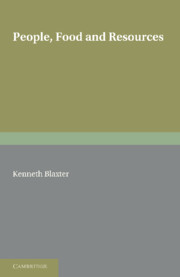6 - PEOPLE IN THE DEVELOPING COUNTRIES
Published online by Cambridge University Press: 06 July 2010
Summary
POPULATIONS AND PEOPLE
The previous chapters have dealt with the population of the developing world as a whole, sometimes distinguishing geographical regions, and only occasionally mentioning individual countries and then merely to illustrate a particular point on a reasonable scale. Every country of the ninety or so which comprise the whole has its singular problems and difficulties. The collective terms, ‘the third world’, ‘the south’, or ‘the less well developed countries’ include a wide variety of human situations. Even within a country there can be massive divisions. In Nigeria, for example, the main ethnic one is between the Moslem Hausa and Fulani in the north of the country and the predominantly Christian Ibo and Yoruba in the south. These are two groupings which have contrasting cultures, attitudes, and economic status. In addition there are smaller groups – the Tiv and the Kanuri – as well as immigrants from the Ashanti peoples. The internal diversity of ethnic groups, cultures, languages and religions contributes to a structural instability in Nigeria illustrated by the Biafran war and more recently by the campaign to expel immigrants from Ghana. The same sorts of divisions are evident in the populations of Zimbabwe where political parties have coalesced largely on former tribal lines, and it is little to be wondered that serious and disruptive wars, civil disturbances or coups have taken place in at least twenty African countries in the last two decades.
- Type
- Chapter
- Information
- People, Food and Resources , pp. 76 - 84Publisher: Cambridge University PressPrint publication year: 1986



